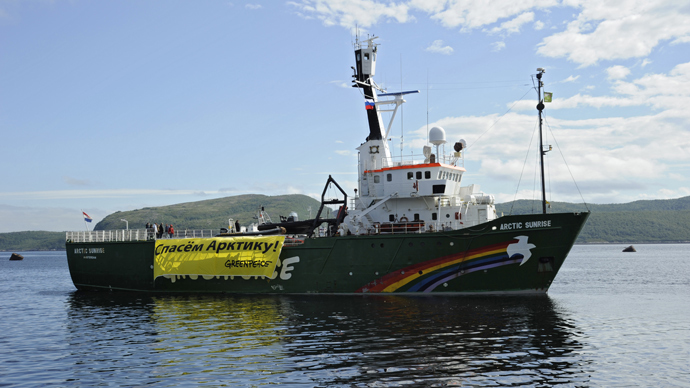
Wreck of the Libelle
Wake Island first received international attention with the wreck of the barque Libelle. On the night of March 4, 1866, the 650 ton Libelle, of Bremen, Germany, struck the eastern reef of Wake Island during a gale. Commanded by Captain Tobias, the ship was en route from San Francisco to Hong Kong. Among its passengers were opera singer Anna Bishop (ex wife of the celebrated French harpist Nicolas Bochsa), her husband Martin Schultz (a New York diamond merchant), and three other members of an English opera troupe.
After 21 days on Wake, the 30 stranded passengers and crewmen sailed in a longboat and the gig for the then Spanish island of Guam. The longboat, containing the opera troupe, Mr. Schultz and other passengers, reached Guam April on 8. Unfortunately, the gig, commanded by the captain, was lost at sea. Captain Tobias had buried valuable cargo on Wake, including 1,000 flasks (34,500 kg) of mercury, as well as coins and precious stones worth about US$150,000. At least five ships conducted salvage operations for its recovery. The plight of the Libelle's passengers and the buried cargo was reported by newspapers around the world.
European discovery and exploration
On October 20, 1568, Álvaro de Mendaña de Neyra, a Spanish explorer with two ships, Los Reyes and Todos Santos, discovered "a low barren island, judged to be eight leagues in circumference", to which he gave the name of "San Francisco". The island was eventually named for Captain William Wake, master of the British trading schooner, Prince William Henry, who visited in 1796.[14]
Jeremiah N. Reynolds' 1828 report to the US House of Representatives describes Capt. Edward Gardner's discovery of a 25-mile (40 km) long island situated at 19°15' N, 166°32' E, with a reef at the eastern edge when he was captain of the Bellona in 1823. The island was "covered with wood, having a very green and rural appearance" and, Reynolds concluded, was probably Wake Island. It was placed on charts by John Arrowsmith.[15]
On December 20, 1840, the United States Exploring Expedition, commanded by Commodore Charles Wilkes of the U.S. Navy, landed on Wake and surveyed the island. Wilkes described the atoll as "a low coral one, of triangular form and eight feet above the surface. It has a large lagoon in the centre, which was well filled with fish of a variety of species among these were some fine mullet." He also noted that Wake had no fresh water but was covered with shrubs, "the most abundant of which was the tournefortia." The expedition's naturalist, Titian Peale, collected many new specimens, including an egg from a short-tailed albatross and various marine life specimens
The 1595-1596 Voyage
A much larger and costlier expedition had been planned by the early 1590s, after Mendaña had spent years courting favour in Madrid and Lima. Four ships and 378 men, women and children were to establish a colony in the Solomon Islands. Again, the leaders of this voyage had “widely divergent personalities.” [11] Mendaña was again in command, accompanied by his wife Doña Isabel Barreto, her three brothers and a sister. Chief Pilot was to be a young Portuguese navigator in Spanish service, Pedro Fernández de Quirós. An argumentative old soldier, Pedro Merino Manrique was chosen as camp master. Manrique caused disputes before the fleet had even departed.
The four ships, San Geronimo (the Capitana), the Santa Isabel (the Almiranta), the smaller frigate Santa Catalina and the galiot San Felipe left Callao on 9 April 1595. Spirits were high in the first month, fifteen marriages being celebrated.[12] Mendaña had Quirós prepare charts for his Captains that only showed Peru and the Solomon Islands.[13]
On 21 July 1595 the ships reached the Marquesas Islands, (named for the wife of the then viceroy of Peru, García Hurtado de Mendoza, 5th Marquis of Cañete) to be met by four hundred people in canoes. Although the Spaniards admired their “graceful shape” and “almost white” complexion, the relationship again descended into violence. When the expedition left two weeks later, Quirós estimated 200 Marquesans had been killed [14]
Despite Mendaña’s confidence that the Solomon Islands were nearby, it was not until 8 September that they sighted land again, this time the island of Nendo, which they named "Santa Cruz".[15] The Santa Isabel had disappeared, however, and despite searches by the two smaller vessels, it could not be found.[16] Arriving at what is now Graciosa Bay, a settlement was commenced. Relations with local islanders and their chief Malope started well, with food provided and assistance in constructing buildings. However, morale amongst the Spanish was low and sickness (almost certainly malaria) was rife. Manrique was murdered at the orders of, and in front of Mendaña, and shortly afterwards, the generous Malope was killed by soldiers. Relations with the Islanders soon descended again into the all too familiar cycle of violence.
Wracked by internal divisions and an increasing death toll, internal bickering increased and the settlement began to fall apart. Mendaña himself died on 18 October 1595, leaving his wife as heir and Governor, her brother Lorenzo, Captain-General. On 30 October, the decision was made to abandon the settlement. When the three ships departed on 18 November 1595, forty-seven people had died in the space of one month [17]
Pedro Fernández de Quirós is generally credited with bringing the San Geronimo safely into the Philippines without the aid of charts, arriving in Manila Bay on 11 February 1596. Over fifty people died on the twelve week voyage from Santa Cruz, in part due to Dona Isabel’s refusal to share out her private store of food and water.[18] The frigate (carrying Mendaña's body) disappeared during the voyage, while the galiot San Felipe limped in to the southern end of Mindanao several days later.
Blackbeard captured a French slaver known as La Concorde in 1717 and renamed it Queen Anne's Revenge. He captained the ship until it ran aground, perhaps intentionally, at Beaufort Inlet in June 1718. (For more on Blackbeard, see sidebar.)
Some accounts at the time suggested that Blackbeard wanted to break up his crew of some 300 to 400 men—and keep the choicest booty for himself.
The ship is still officially classified as "believed to be" the QAR. But mounting evidence suggests to many that the wreck is that of Blackbeard's ship.
"It's not like CSI," said Cheryl Ward, a Florida State University maritime archaeologist not involved in the project. "In the real world nobody solves anything in a 24-hour period. We may never get a definitive answer, but I think that they've got a very good case for this being the Queen Anne's Revenge. I certainly know of nothing they've found to suggest that it can't be."

A copper-alloy sword guard was recently found in a shipwreck thought to be Blackbeard's Queen Anne's Revenge, archaeologists said in March 2009. The guard would have sat between the sword's steel blade and its wooden handle. An x-ray of the sword guard (bottom) shows a small hole where a decorative chain might have been attached. Infamous pirate Blackbeard grounded his ship while trying to enter the harbor of Beaufort, North Carolina in 1718. |






 Growing risk
Growing risk



